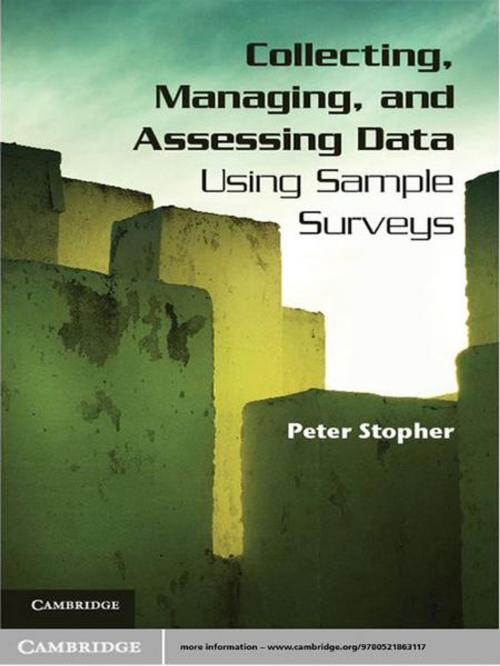Collecting, Managing, and Assessing Data Using Sample Surveys
Business & Finance, Economics, Econometrics, Nonfiction, Science & Nature, Mathematics| Author: | Peter Stopher | ISBN: | 9781139209434 |
| Publisher: | Cambridge University Press | Publication: | January 19, 2012 |
| Imprint: | Cambridge University Press | Language: | English |
| Author: | Peter Stopher |
| ISBN: | 9781139209434 |
| Publisher: | Cambridge University Press |
| Publication: | January 19, 2012 |
| Imprint: | Cambridge University Press |
| Language: | English |
Collecting, Managing, and Assessing Data Using Sample Surveys provides a thorough, step-by-step guide to the design and implementation of surveys. Beginning with a primer on basic statistics, the first half of the book takes readers on a comprehensive tour through the basics of survey design. Topics covered include the ethics of surveys, the design of survey procedures, the design of the survey instrument, how to write questions and how to draw representative samples. Having shown readers how to design surveys, the second half of the book discusses a number of issues surrounding their implementation, including repetitive surveys, the economics of surveys, web-based surveys, coding and data entry, data expansion and weighting, the issue of non-response, and the documenting and archiving of survey data. The book is an excellent introduction to the use of surveys for graduate students as well as a useful reference work for scholars and professionals.
Collecting, Managing, and Assessing Data Using Sample Surveys provides a thorough, step-by-step guide to the design and implementation of surveys. Beginning with a primer on basic statistics, the first half of the book takes readers on a comprehensive tour through the basics of survey design. Topics covered include the ethics of surveys, the design of survey procedures, the design of the survey instrument, how to write questions and how to draw representative samples. Having shown readers how to design surveys, the second half of the book discusses a number of issues surrounding their implementation, including repetitive surveys, the economics of surveys, web-based surveys, coding and data entry, data expansion and weighting, the issue of non-response, and the documenting and archiving of survey data. The book is an excellent introduction to the use of surveys for graduate students as well as a useful reference work for scholars and professionals.















